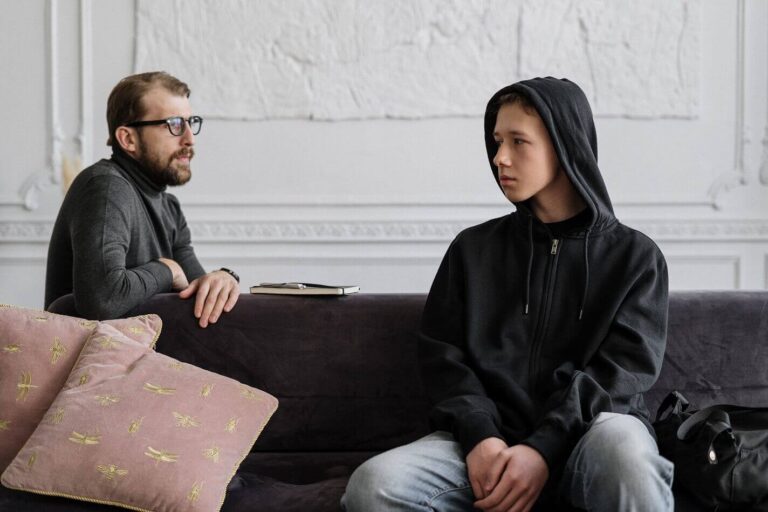are hoodies unprofessional?
when are hoodies invented?
Hooded garments can be traced back to medieval times, even long before that. This comes from the indisputable need of creating a clothing item that offers protection for the head too.
However, the hooded sweatshirts or hoodies that we know today weren’t created until the 1930s when the clothing brand Champion created the first hooded sweatshirt designed to keep New York warehouse workers warm from the cold winter.
This clothing item became popular during the 70s, because of the growing hip-hop culture and famous celebrities, which made this garment, especially popular among young men. If you want to know more about the history of the hoodie, visit this article about when were hoodies invented, or just go read Wikipedia if you’re like that.
who wears hoodies?
Hoodies became very popular among young people, especially young rebellious men. That is because the hip-hop culture was using them as a symbol, and young rebellious teens were all wearing hoodies, which subliminally made us relate hoodies to bad boys, rebellious teens, adventurous young people… Hoodies symbolize youthfulness.
This has changed however, the comfortable nature of hoodies has skyrocketed their popularity and now we can see people of all ages and socioeconomic backgrounds wearing these garments, breaking the stereotype of the grumpy edgy teenager that wears hoodies all the time.
In conclusion, hoodies have become a vital part of our closet, they have solved a millennial problem with regular sweatshirts, they have brought too much comfort into our lives… We cannot live without them.

is it bad to wear hoodies all the time?
Hoodies are the ultimate apparel, they keep you warm and cozy in winter and they can also keep you relatively fresh in the summer, they are fashionable, they make us confident, comfortable…
So no, wearing hoodies all the time is nothing to be ashamed of, everyone wears them for many reasons, but don’t exaggerate either, wearing hoodies when it’s 100ºF or 38ºC outside is strange and potentially dangerous.
You should also keep in mind the context, wearing a hoodie is not always appropriate depending on the situation you’re in, that’s what we will talk about next.
are hoodies unprofessional?
A hoodie is a casual type of garment, made to be comfortable, stylish, lightweight… You can say it is a clothing item made for the streets, something natural considering its history and how it became popular because of the hip-hop culture adopting it in the 70s.
Depending on where you work and the context, a hoodie may be considered too casual to be worn, too informal, which can be great if you’re a personal trainer but it’s unwanted if you work in a bank or other serious company.
In conclusion, a hoodie is unprofessional if the place you work at requires you to display a serious, strictly professional image, like an insurance or banking company. However, if your job requires you to have a friendly, casual image then the hoodie can be a great choice to achieve that, it all depends on the context, all you need to know is that the hoodie is an informal, casual garment made for wearing at home or in the street.

kakaretso
Re tšepa hore u ithutile ho hongata kajeno, Re thabetse ho ruta batho lefatšeng ka bophara :). Ebile,na u tseba ka feshene e potlakileng le litlamorao tsa eona tse mpe tikolohong, bathong le moruong? Na ua tseba hore na Slow Fashion kapa Sustainable Fashion movement ke eng? U tlameha ho bala lingoliloeng tsena mabapi le taba ena e sa tsejoeng empa e potlakileng, tlanya mona ho bala "Na Feshene e ka Feta e Tšoarehile?", tsebo ke matla, ho hloka tsebo ke timelo.
Hape re na le ntho e makatsang bakeng sa hau!Re hlophisitse leqephe le inehetseng ka hloko ka Us moo re tla u bolella hore na re bo-mang, re etsa eng, sepheo sa rona, sehlopha sa rona, le tse ling tse ngata!Seke oa fetoa ke monyetla onaletlanya mona ho e hlahloba. Hape, o ka etela ronaPinterest, moo re tla kenya litaba tse tšoarellang tse amanang le feshene le mekhabiso ea liaparo eo ka sebele u tla e rata.
Phatlalatsa molaetsa:
- Tobetsa ho arolelana ho Pinterest (E buloa ka fensetere e ncha)
- Tobetsa ho arolelana ho Twitter (E buloa ka fensetere e ncha)
- Tobetsa ho arolelana ho Facebook (E bula ka fensetere e ncha)
- Tobetsa ho arolelana ho WhatsApp (E buloa ka fensetere e ncha)
- Tobetsa ho arolelana Reddit (E bula ka fensetere e ncha)
- Tobetsa ho arolelana ho Telegraph (E buloa ka fensetere e ncha)
- Tobetsa ho arolelana ho LinkedIn (E buloa ka fensetere e ncha)
- M oli
